Hello everyone! How's the week treating you? Today we're going to talk about a beautiful world of food, with a complete blend of flavors, textures, and aromas: Korean food. It's the most unknown of all Asian cuisines... Does it have anything in common with Japanese cuisine? And with Chinese cuisine? What's different about it? We have a lot of questions... and luckily, a lot of answers!
Korean culture is becoming increasingly well-known worldwide, and much of that is due to the K-pop movement that has been breaking it in recent years… Let's take advantage and add the culinary side, which is incredible!
Come in, read on, and join Club Atlético Comida Coreana.
The keys to Korean food
Korean food is increasingly popular around the world. If you were thinking that Korean food is similar to Japanese, Chinese , or any other type of Asian cuisine, let me tell you, you're mistaken. It has some similarities, of course, but Korean cuisine is unique, with many unique dishes and a world of traditions and customs that make it one of the most impressive cuisines.
Let's go over a couple of things to keep in mind about this kitchen:
Balance is the main thing
To understand Korean cuisine, you must first understand its philosophy of Yin and Yang and the five elements.
The dishes are prepared with great care so that nothing is out of place. The aesthetic harmony that comes with this gastronomic philosophy means that equal attention is paid to the food itself, its temperature, nutritional value, color, and even the containers in which it is served. Everything must be appropriate for each dish and each occasion.
Hansik
What? Well, this is a little more than what I explained before, but it's another philosophy that runs through Korean food. It has to do with harmony and also maintains that medicine and gastronomy have the same purpose . Flavors combine harmoniously: sweet, salty, sour, spicy, and bitter, all in the right and necessary way.
Visually, the five shades of nature—green, red, white, black, and yellow—are also combined, so the aesthetics of the dishes also contribute to their chromatic harmony. Furthermore, Korean food represents all the characteristics of Korea's different seasons and regions and places great importance on harmonizing different flavors .
Basically, if Korean cuisine were an influencer, of course, it would be about personal care, skin care, and all that stuff… And I'm sure her feed would be super organized and well thought out. And she'd have millions of followers.
What are the foods that cannot be missed?
Rice, soup, and kimchi. A good bowl of rice is always a must-have on the table; it's the banchan (food that accompanies the main course).
As for soups, they have such a variety of broths that they are classified according to how they are prepared:
- Guk: is a semi-transparent broth with few ingredients.
- Jjigae: prepared with many ingredients and little water
- Jeongol: many ingredients and little water, boiled in the center of the table in a large pot.
As for kimchi, we'll tell you more about it below, so be patient; we also learned that from the Koreans.
Sticks
Koreans also eat with chopsticks. But they're not wooden or lacquered: they're metal, narrower and thinner, and require a different level of skill when holding them (although if you know how to eat with Chinese chopsticks, you'll be fine with these). The spoons also vary: they're not small and thick, but long and thin, more similar to ours. If they give you wooden chopsticks in a Korean restaurant, complain, because they're not good like that.
Differences between Chinese and Japanese food
The flavors of Chinese and Japanese food are very different!
- Chinese food is usually served family-style, while Japanese food is served in individual dishes.
- The most famous dishes in Chinese cuisine are usually stir-fried, while in Japanese cuisine the ingredients are cooked separately.
- In Chinese cuisine, spiciness is often higher, while in Japanese cuisine, it is not.
5 dishes of typical Korean food:
#1 Kimchi
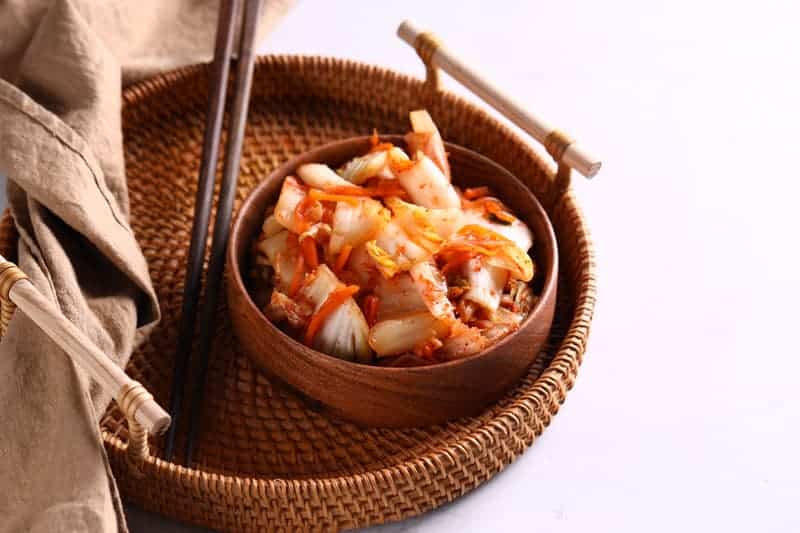
It's perhaps Korea's most famous dish . And it's perfect! It's found in every restaurant and every home. Served with almost every dish, it's a fermented cabbage-based preparation. It's seasoned with sesame oil, doenjang (fermented bean paste), soy sauce, salt, garlic, ginger, pepper, and gochujang (fermented red chili paste).
Imagine how important it is that it's included on UNESCO's Representative List of Intangible Cultural Heritage of Humanity. And YES, obviously, it has a millennia-long history because it was an exceptional way to preserve ingredients and vegetables without refrigeration.
Would you like us to make this recipe? Leave it in the comments and we'll try it!
#2 Bibimbap
Another Korean classic , " bibim" means mixed, and that's basically what it is. A mixture of a little bit of everything: vegetables, rice, egg, sautéed meat, seaweed... It's eaten at any time of day and is usually accompanied by soup.
You've never tried Korean food and don't know what to order. You know bibimbap is a classic dish, but you're not sure what it is. Bibimbap is a delicious dish made with rice, vegetables, and meat or seafood. It's a perfect introduction to Korean cuisine for anyone who's never tried it before. The best part is that you can customize your bibimbap to include exactly the ingredients you like. So, go ahead and order bibimbap the next time you're looking for something new to try.
#3 Pajeon
The name is meant to trick us into making a cheap joke, but it won't happen, gentlemen. We're talking about something very serious here. Pajeon is a delicious dish made with rice, vegetables, and meat or seafood.
Pajeon is a Korean savory pancake , made with a flour and egg batter topped with various ingredients. This pancake is usually cut into squares and served as a starter for meals. It's ideal for sharing and is often dipped in soy sauce .
The best part is that you can customize your pajeon to include exactly the ingredients you like—so go ahead and try pajeon next time you see one!
#4 Mandu
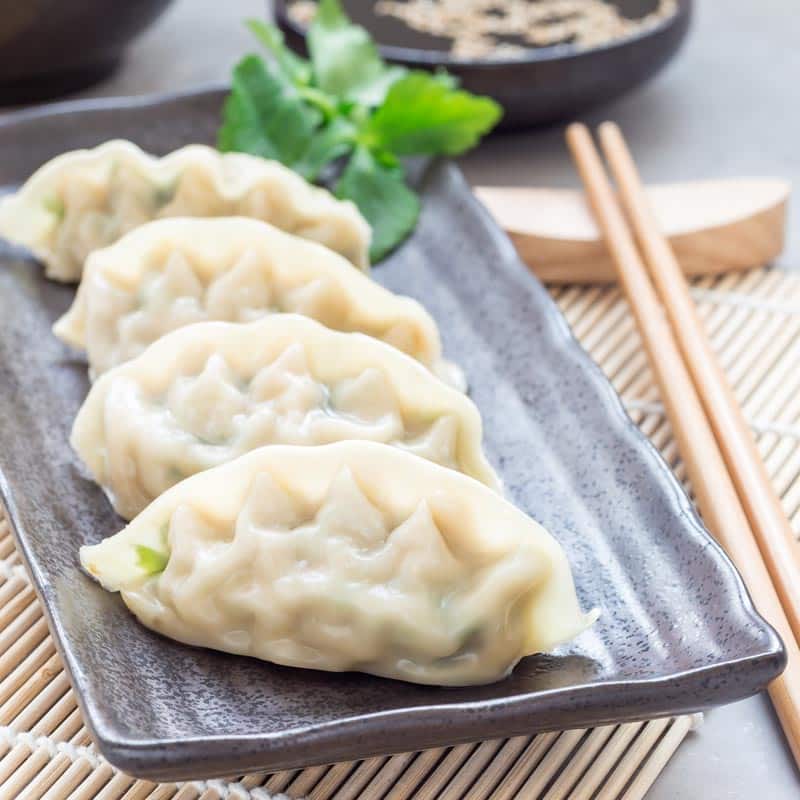
It's the Korean version of dumplings (here's the video ), only a little more rounded.
They're a type of dumpling that can be fried, boiled, or steamed. They can be filled with any filling you like, although two of the most typical are meat and kimchi. They're generally a dish meant to be shared, not a stand-alone meal.
#5 Hangwa
Well, let's go with something sweet among all the spicy and savory treats. Hangwa is the generic term for traditional Korean confectionery. They are small cakes made with honey, sugar, edible roots, fruits, and glutinous rice, among other ingredients.
The history of hangwa, or Korean sweets, is closely related to the culture of funeral rites in that country… In seasons when fruit was unavailable, sweets were made with cereal flour and honey, shaped like fruit, and presented on the altar, either hung or attached to the branches of fruit trees, to be offered to the ancestors.
The most well-known are Gangjeong, Dasik, and Yakgwa. But these sweets deserve a post of their own. They're crazy!
BONUS TRACK: What do we take?
Korea's national drink is soju . It's like sake in Japan. A distilled liquor, similar to vodka but with a sweeter flavor and less alcohol. It's usually drunk with meals and is considerably cheaper.
There are different flavors besides the classic one, and if you have the chance, try it, it's worth it.
WELL… We've reached the end of our tour of Korean food. Did you like it? If you like regional recipes, you can find the best Venezuelan … and a whole lot more!
We'll read each other later, bai, we love you.
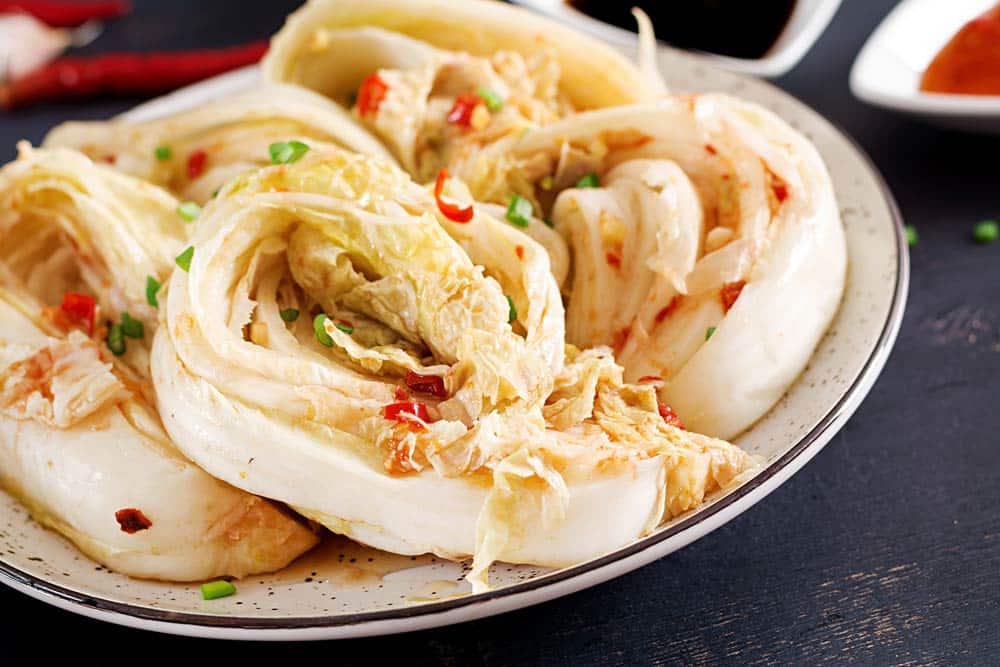
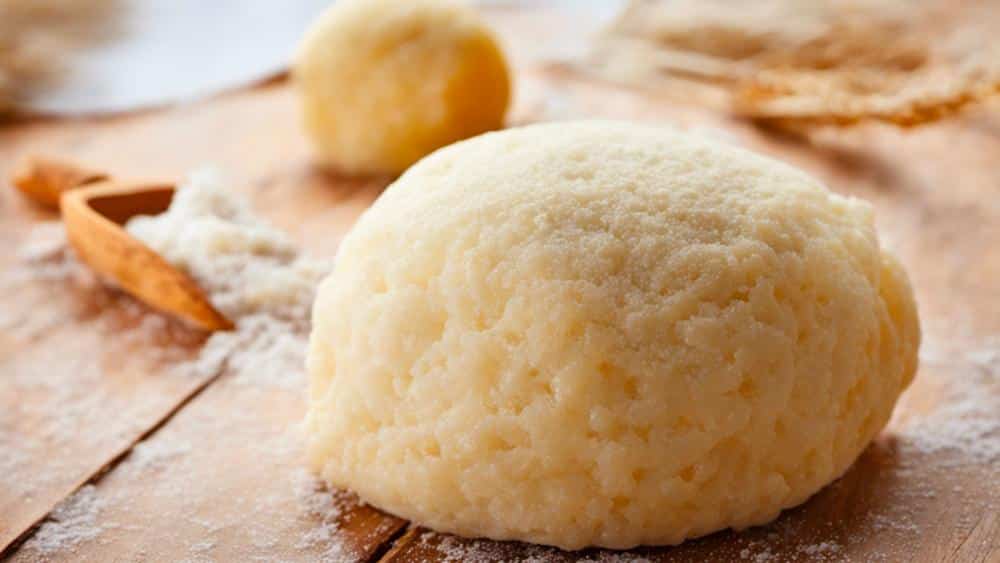

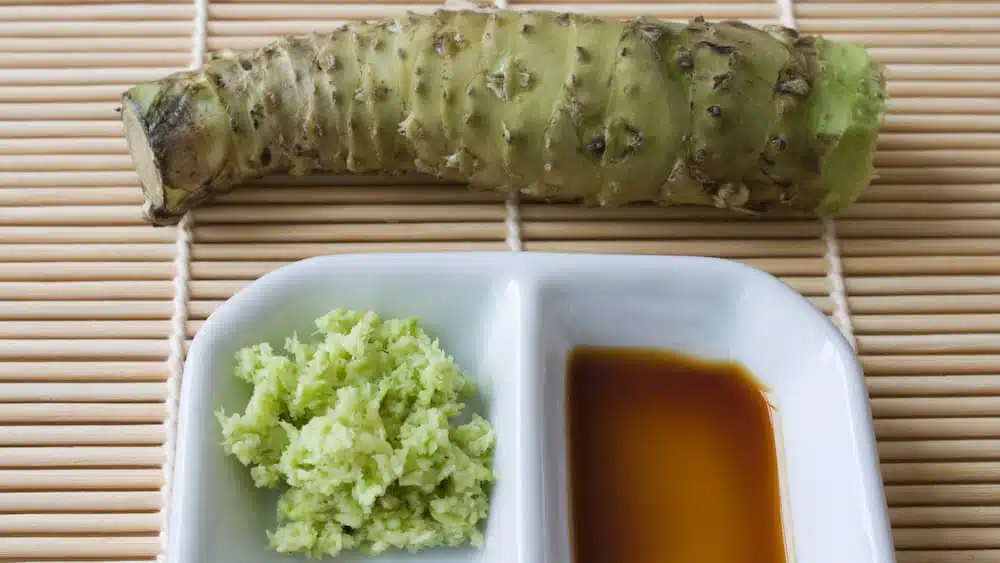


I love Korean food and even more Korean kdramas and their beautiful actors.